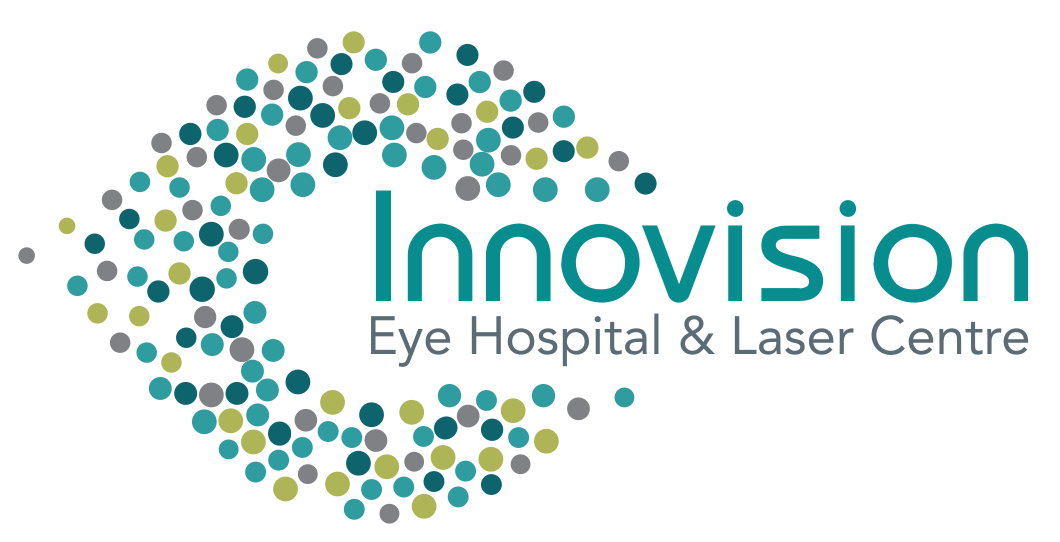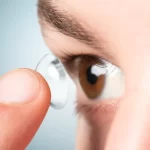What is Dry Eye Syndrome?
Dry eye syndrome is a common condition clinically described as the decline in the quantity or quality of tears on the surface of the eye. It is the result of a decrease in the sensitivity of the cornea, excessive evaporation of tears, or a physical disorder in the glands that form tears. Environmental factors or medical conditions often exacerbate dryness, which can be easily relieved with drops to supplement natural tear production.
The tear film can be considered to consist of three layers. The most superficial layer is the oil layer (lipid layer) produced by the oil glands in the lids. These oil glands are called meibomian glands. This oil layer coats the tear film retarding evaporation. The aqueous (water) component of the tear film is secreted by the lacrimal glands located in the upper part of the bony orbit. Every time we blink, you naturally replenish the thin layer of tears covering your eyes. Dry eyes occur when the system that produces your tears breaks down. This causes the clear tissue that covers the opening of your eye (cornea), or parts of it, to dry out.
Some people don’t produce enough tears to keep their eyes comfortably lubricated. Common causes of dry eyes include:
Dry eyes usually affect both the eyes. The symptoms may include :
Major Symptoms of Dry Eye

- Computer users report dry eye symptoms so frequently, it’s been called CVS – Computer Vision Syndrome. During reading and TV or computer viewing, the rate of eyelids blinking reduces significantly. This causes the tear film to evaporate leading to dryness of the eyes.
- Lasik eye surgery patients often suffer post Lasik dry eyes
- Women get dry eye syndrome as a result of hormonal fluctuations, especially during menopause
- Older people also suffer as their eyes produce 40% less tears
- Contact lens wearers often have dry eye syndrome because their corneal sensitivity becomes reduced over long-term use
- Those on medications like antihistamines, antibiotics, antidepressants, and birth control pills can get dry eyes
- Smokers and allergy sufferers are very susceptible to dry eye syndrome
- People living in dry, dusty, or windy climates report dry eye symptoms, especially in winter when indoor air is dry and stale.
Dry eye is a chronic, progressive disease that affects the surface of the eye. Without treatments, the symptoms may ebb and flow, but there is likely progressive damage occurring to the front surface of your eye. If left untreated, dry eyes can become dangerous. Excessive dryness can scar the cornea, impairing vision and damaging the tissues. Significant dryness can lead to greater chance of infection, breakdown of the corneal barriers and perforation of the cornea.
Dry eye syndrome is an ongoing condition, often with a vicious cycle of inflammation, that can be cured or not depending on the causes for the dry eye. However the effects of dryness, scratching and burning can be managed. Applying artificial tears and ointments typically treats dry eyes. These give temporary relief, but usually do not arrest or reverse damage to the eye.
Some simple steps can be adopted to reduce symptoms in minor Dry eye
If the dry eye is caused by environmental factors, use of sunglasses during outdoors can reduce exposure to sun, wind, and dust. Indoors, an air cleaner can filter out dust and other particles from the air, while a humidifier adds moisture to air that’s too dry because of air conditioning or heating

The frequency of dry eye medications or tear substitutes is usually dependant on the severity of your condition. For mild cases, one or 2 drops a day may suffice, for severe cases even hourly instillation may be needed. Your doctor will generally decide the timing of your tear substitute; e.g., you may need them just after a journey in the dust or after watching TV or Computer for a long time etc.
Temporary or permanent silicone plugs in the lacrimal (tear) ducts keep tears in your eye from draining away as quickly thus retaining for longer periods of time the tears produced naturally or topically applied drops. Sometimes, however, the tear ducts need to be closed surgically.
Dry eye caused by “meibomitis” (the infection and inflammation of oil glands in the eyelids) can be treated with antibiotics such as tetracycline. Contact lens may also be a cause of dry eyes, which can be cured by switching off to a different lens or wearing time of the lens should be minimized. In a few cases, it is recommended that contact lens wear be discontinued altogether until the dry eye problem is cleared up.
If medications are the cause of dry eyes, discontinuing the drug generally resolves the problem. But in this case, the benefits of the drug must be weighed against the side effect of dry eyes. Sometimes switching to a different type of medication alleviates the dry eye symptoms while keeping the needed treatment. Switching of drugs should ideally be a combined decision of the ophthalmologist and the treating physician.
Adding Immunomodulator medicines to reduce ocular surface inflammation and break the cycle that worsens dry eye is often helpful. These medicines may be in the form of a short course of steroid eye drops or a longer course of medicines such as Cyclosporine, Lifitegrast or Chloroquine eye drops. The latter drops can often be used for years safely.
Sometimes recommend special nutritional supplements for dry eyes. Studies have found that supplements containing certain essential fatty acids (Linoleic and Gamma-Linolenic) can decrease dry eye symptoms.

Dry eye patients commonly face other problems as well.
Dry eye treatment may often require a multidisciplinary approach using coordinated treatment between the ophthalmologist, immunologist and the treating physician.




